Dehydration Symptoms: What Your Body Is Trying to Tell You
Dehydration occurs when your body loses more fluids than it takes in, leaving it without enough water to carry out normal functions. In simple terms, you're not adequately replenishing the water your body needs. The signs of dehydration are essentially your body's alarm system – its way of telling you it needs more fluids.
Some signs are subtle early warnings, while others are more serious late-stage red flags. By learning to recognize both early and late symptoms, you can respond before dehydration becomes dangerous.
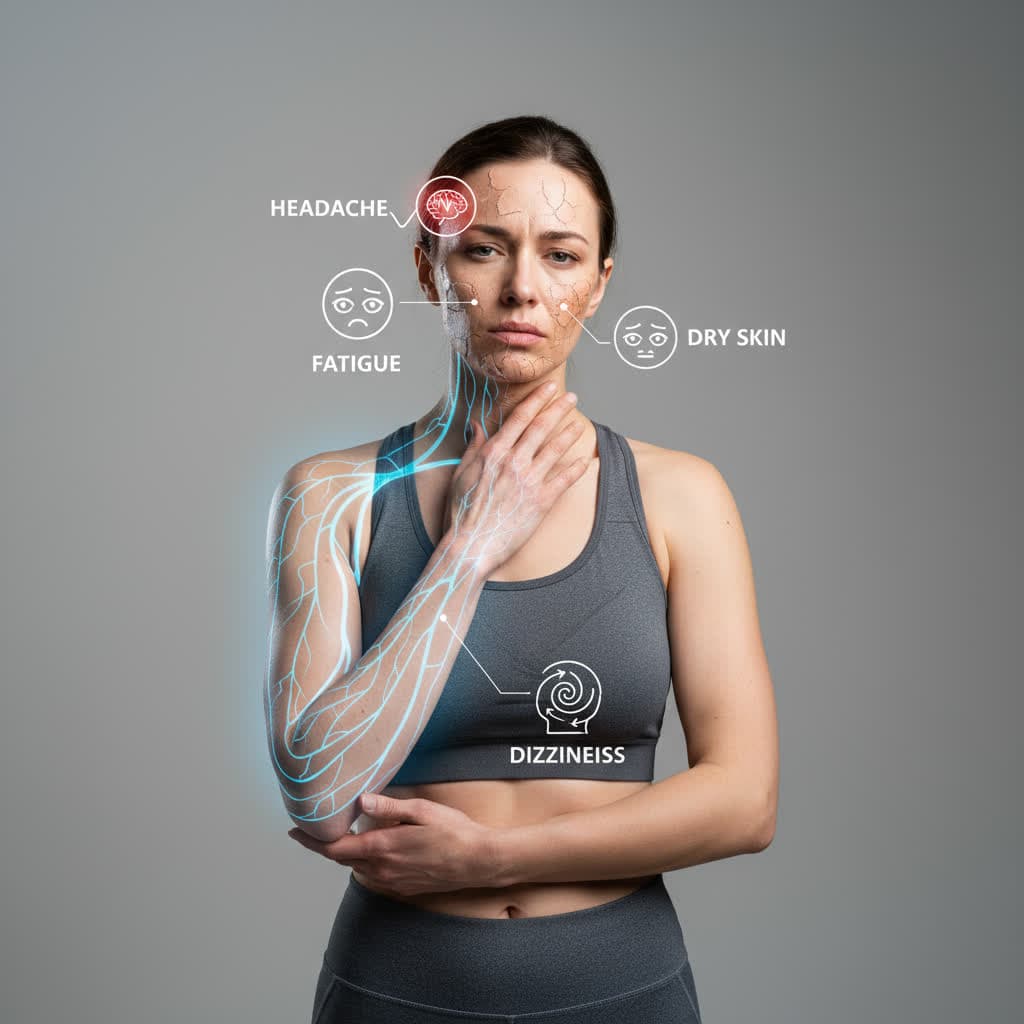
In this article, we'll explore the early vs. late signs of dehydration, how to use urine color as a hydration gauge, and effective prevention strategies. The goal is to help you tune in to what your body is trying to tell you, build trust in those signals, and keep you safely hydrated.
Early Signs of Dehydration (Mild to Moderate)
Your body is quite clever – it gives off early signs of dehydration to nudge you into drinking fluids. These mild to moderate symptoms are like a whisper, telling you to hydrate before things get worse. Common early dehydration signs include:
Thirst and Dry Mouth
Feeling thirsty is often the first and most obvious sign. You might also notice a dry or sticky feeling in your mouth and on your tongue as your body produces less saliva when fluids are low. Essentially, your body is prompting you to drink by making you feel thirsty or parched.
Important: Don't ignore this signal – by the time you're noticeably thirsty, you're likely already mildly dehydrated.
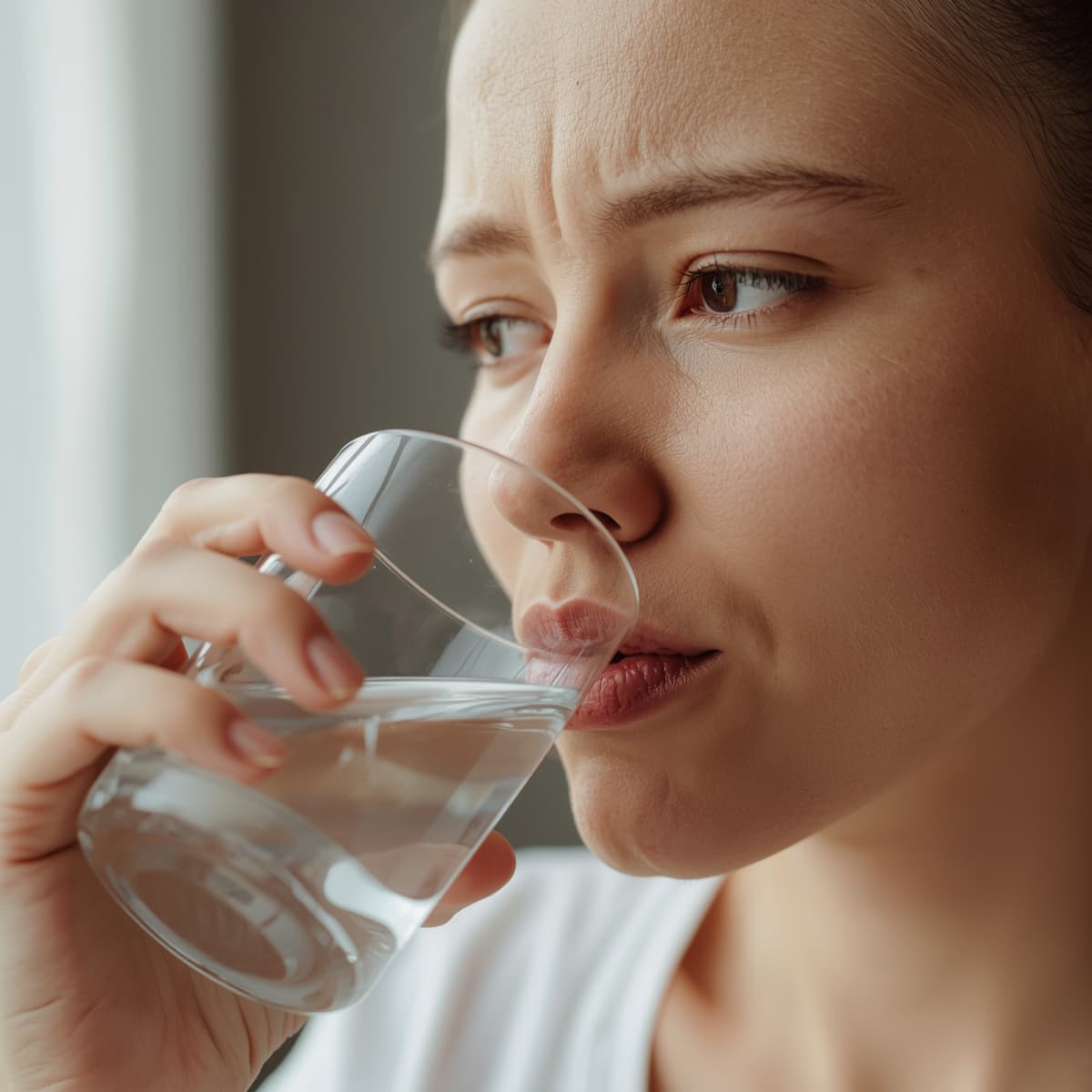
Dark Urine and Less Frequent Urination
Pay attention next time you use the bathroom – urine color is a handy dehydration indicator. If you're well-hydrated, your urine tends to be pale yellow or almost clear. When you're dehydrated, it becomes more concentrated and turns a darker yellow or amber color. You may also urinate less often than usual.
In mild dehydration, urine might just be a bit darker yellow; as dehydration worsens, it can turn an even deeper amber. This happens because your body tries to conserve water – the kidneys hold on to fluid, resulting in less, but more concentrated, urine.
Key indicator: If you notice a dark urine color, it's a clear sign you need to drink up.
Dehydration Headache
That nagging headache could be more than just stress – it might be due to dehydration. In fact, dehydration can lead to headaches, though the exact mechanisms aren't fully understood. When your body is low on water, it can cause changes in blood volume and electrolyte balance that trigger head pain (often called a "dehydration headache").
Some people are especially prone to this. If you feel a headache coming on, consider whether you've had enough to drink. Often, rehydrating can help this type of headache subside.
Dizziness or Lightheadedness
Ever stand up quickly and feel the room spin? Dizziness can be a sign of dehydration, stemming from a drop in blood volume. When you're low on fluids, your blood pressure can fall and the brain may receive less blood flow, leading to that lightheaded, woozy feeling.
In mild cases, you might just feel a bit unsteady when moving from sitting to standing. This dizziness from dehydration is your body's way of saying it doesn't have enough fluid to maintain normal circulation.
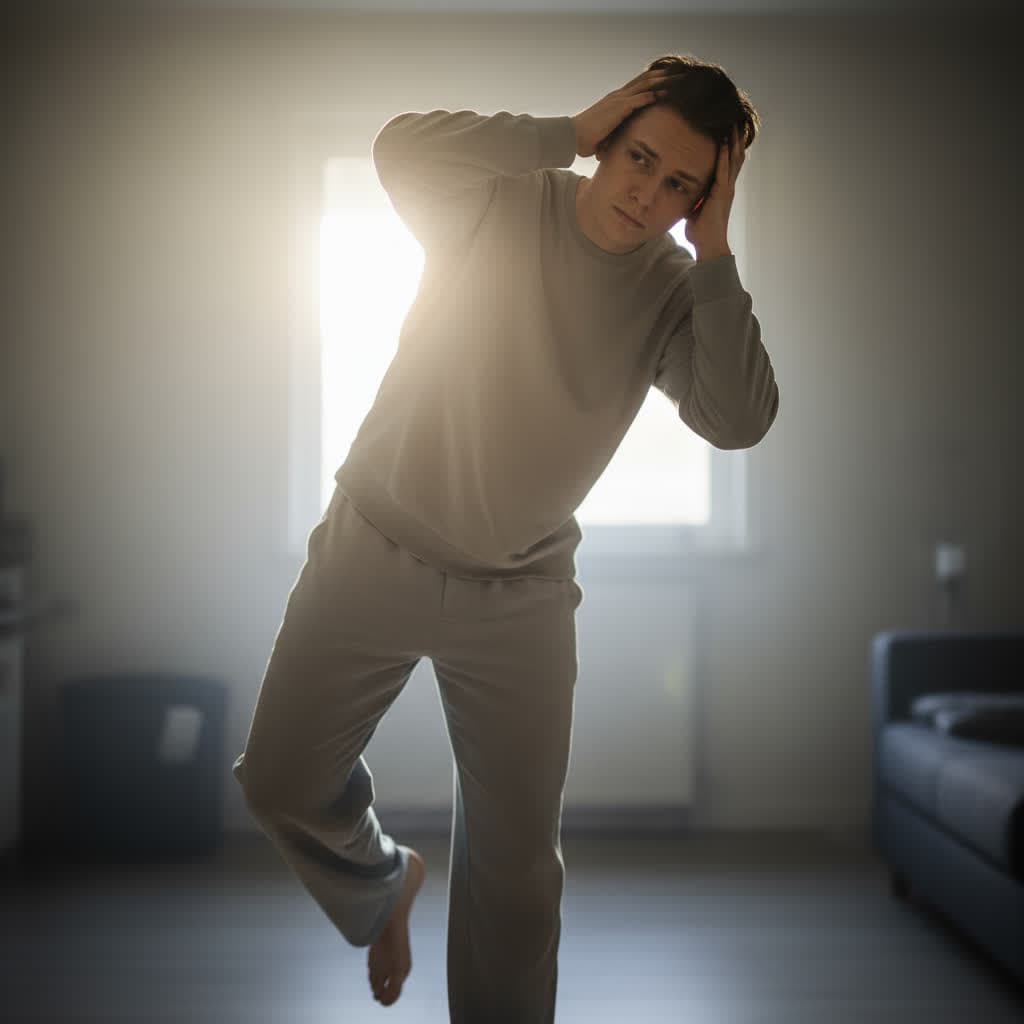
Fatigue and Low Energy
It's not all in your head – dehydration can genuinely make you feel fatigued and sluggish. Water is essential for virtually every bodily function, so when you don't have enough, your tissues and organs aren't operating at full capacity.
The result is often a sense of tiredness or fatigue from dehydration, even if you've had a good night's sleep. You might notice you hit an afternoon slump harder than usual or you feel exhausted after light activity. Restoring your fluid balance can often rejuvenate your energy levels.
Dry Skin and Cool, Clammy Feeling
Early dehydration might show up on your skin. Your skin could feel drier than normal, and sometimes it may feel cool and clammy to the touch. You might not sweat as much as you normally do, even in warm conditions, because your body is conserving water.
In a quick pinch test, mildly dehydrated skin may still spring back, but it's heading toward less elasticity (more on the "skin tent" effect in severe dehydration later).
Muscle Cramps
If you've ever had your calf or foot cramp up during a workout or on a hot day, dehydration could be a culprit. When your fluid and electrolyte levels drop, muscles can spasm and cramp more easily. Early on, you might just feel some muscle tightness or minor cramps, especially if you're exercising without proper hydration.
Remember: These early signs are warnings – your body's gentle reminders to drink fluids. Don't wait until you're extremely uncomfortable. As soon as you notice symptoms like thirst, headache, or dark urine, act by drinking water or a hydrating beverage. Usually, mild to moderate dehydration can be corrected by simply increasing your fluid intake.
Why These Symptoms Happen
Your body is essentially saying "I need water," and by listening to those cues, you can prevent the situation from escalating. In short, water is vital for blood circulation, temperature regulation, and delivering nutrients to cells. When even mildly low on fluids, the body starts to prioritize vital organs and functions.
It pulls water from less critical areas (like saliva production or the moisture in your mouth), leading to dryness. It constricts blood vessels slightly to maintain blood pressure, which combined with lower blood volume can make you dizzy or lightheaded. Less water for the brain and muscles means headaches and fatigue as your body literally slows itself down to cope.
These early signs are unpleasant, but they're usually reversible within a few hours once you rehydrate.
Late Signs of Dehydration (Severe)
If the early warnings go unheeded, dehydration can progress to more severe levels. Late-stage dehydration is serious and can even become life-threatening. At this point, your body is no longer whispering – it's shouting for help.
Severe dehydration means your internal fluid loss is significant (typically >5–10% of your body weight lost in water), and urgent action is needed.

Very Little or No Urination (and Very Dark Urine)
In severe dehydration, your body may virtually shut down urine production to conserve whatever fluid is left. You might notice you haven't needed to pee for many hours, or when you do, it's only a few drops of dark amber urine.
Extremely dark yellow or even brownish urine is a strong warning sign – it indicates that waste products are highly concentrated due to lack of water.
Medical note: Keep in mind, if urine becomes truly brown or tea-colored, it could also signal serious issues like liver problems or blood in the urine, so seek medical attention in that case.
Dry, Shriveled Skin and Poor "Skin Turgor"
As dehydration worsens, the skin loses elasticity and moisture. It may appear dry, wrinkled, or ashen. A classic test for severe dehydration is "skin turgor" – if you pinch the skin on the back of your hand or forearm, it will tent (stay pinched up) rather than snapping back to normal promptly.
In a very dehydrated person, skin might remain elevated for a second or two when pinched, showing that the tissues lack water. Lips and mucous membranes (like inside the mouth) may be extremely dry and even cracked at this stage.
Rapid Heartbeat and Breathing
You might feel your heart racing or pounding even while at rest. This is because dehydration lowers your blood volume, so your heart beats faster to try to maintain blood pressure and get blood (and oxygen) to your organs.
You may also notice rapid, shallow breathing as your body struggles to maintain oxygen delivery with less fluid circulating. If you can check your pulse, you'd find it considerably higher than normal. This tachycardia (fast heart rate) combined with quick breathing is a red flag that dehydration is affecting your whole cardiovascular system.
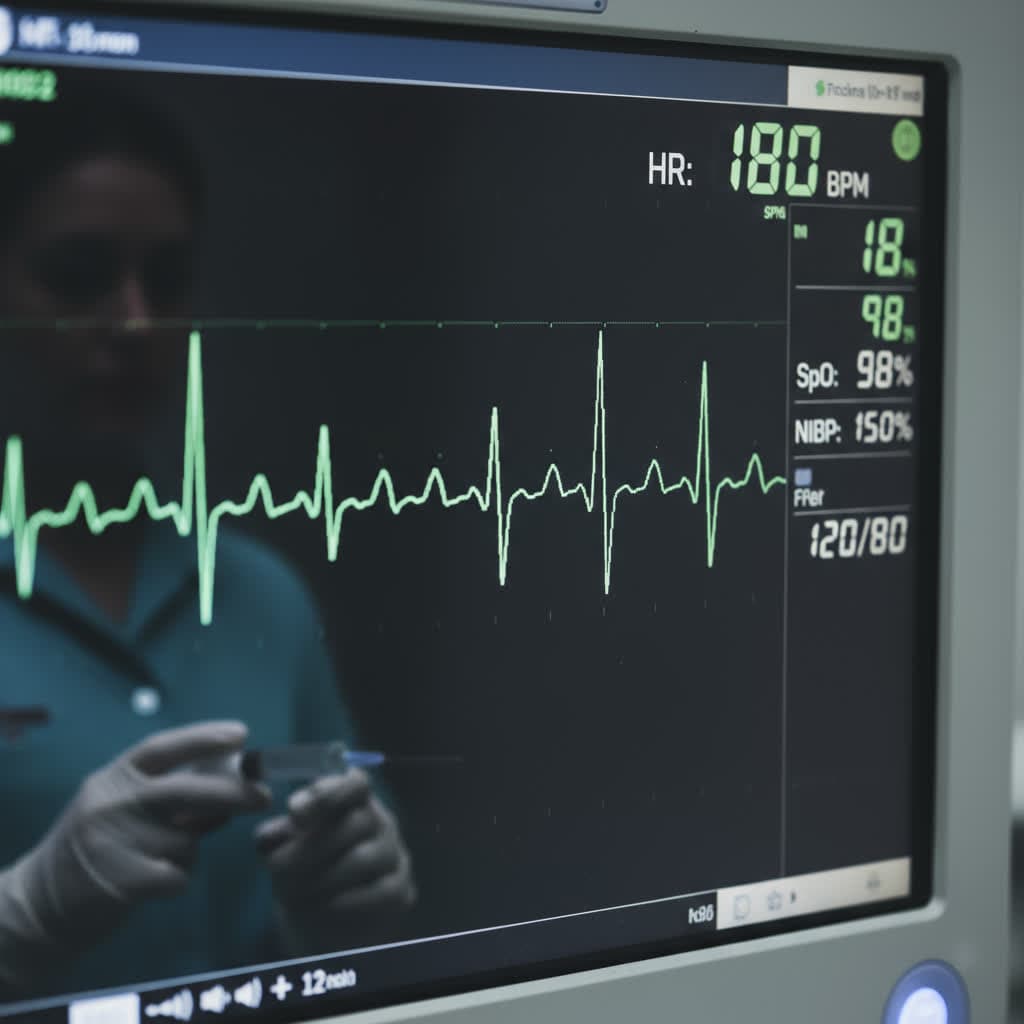
Dizziness, Confusion, or Irritability
The lightheadedness of mild dehydration can progress to true vertigo or dizziness so severe you might feel like you'll faint. In fact, fainting (blacking out) can occur in severe dehydration because of critically low blood pressure and inadequate blood flow to the brain.
You might also experience confusion, disorientation, or unusual irritability. A dehydrated brain does not function properly – people (especially children and the elderly) may become combative, delirious, or extremely drowsy as their dehydration worsens.
Example: An otherwise sharp-minded person might suddenly seem lethargic or out-of-it; this is a sign the brain is not getting what it needs.
Sunken Eyes and Fontanelles
A classic visual sign, especially in infants and young children, is sunken eyes. The eyes may look deeply set and have dark circles around them when a person is severely dehydrated. In babies, you might also notice a sunken soft spot on the top of the head (fontanelle). These are signs that tissues have lost significant fluid.
Listlessness or Extreme Fatigue
Whereas mild dehydration causes tiredness, severe dehydration can cause a person to become extremely weak, unable to stand or walk, or completely apathetic and hard to rouse (listlessness). The body is essentially starting to shut down non-essential activity to preserve energy and keep vital organs functioning.
Shock and Organ Failure
In the most severe cases, dehydration leads to hypovolemic shock – a dangerous drop in blood pressure and organ perfusion. Signs of this include:
- Cold extremities
- A rapid weak pulse
- Blue-tinged lips or fingertips
- Confusion
- Loss of consciousness
If not treated, vital organs like the kidneys, liver, and brain can start to fail due to lack of blood flow. This is a medical emergency.
Critical warning: Severe dehydration is not something you can fix at home with just water – it requires immediate medical attention. If you or someone else shows late-stage signs like confusion, absence of urination, or fainting, seek emergency medical care.
Intravenous (IV) fluids are often needed to rapidly replace lost volume in cases of severe dehydration. Delaying treatment at this stage can lead to seizures, permanent injury, or even death.
In short, late signs of dehydration indicate a critical situation. The body is essentially saying, "I'm in crisis – I need fluid now." Always respond to these signs as the serious alarms they are.
Understanding the difference: Early signs are like a yellow light – caution, hydrate now – whereas late signs are a red light – an emergency stop, often requiring professional help. By recognizing early symptoms, you ideally prevent ever getting to the severe stage.
Urine Color as a Hydration Gauge
One of the simplest ways to monitor your hydration is to check the color of your urine. It may sound a bit unglamorous, but your pee is a powerful indicator of what's going on inside your body.
In fact, doctors often refer to the typical yellow urine pigment as urochrome, and its concentration changes based on your hydration level. Here's the basic rule: the lighter the color, the better hydrated you are; the darker the color, the more dehydrated.
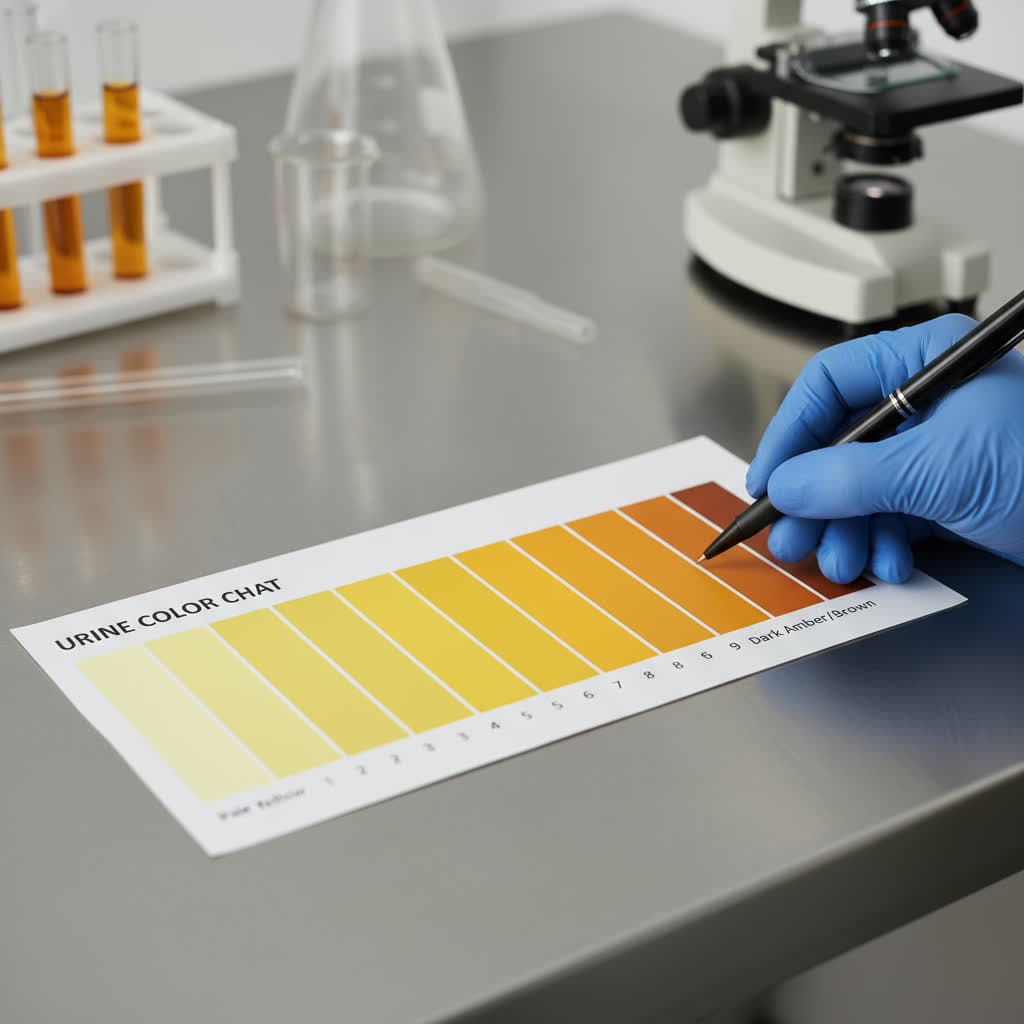
Using a urine color chart can help you visually reference where you stand on the hydration spectrum. Notice in the urine color chart above how pale straw-colored urine is in the optimal range, whereas dark yellow or amber urine falls into the "must hydrate" range.
Understanding the Color Scale
Let's break down the colors in plain language:
Clear or Very Pale Yellow
If your urine is almost clear or a very light yellow (think "lemonade" color), congrats – you are well hydrated. This is often the goal. In fact, if it's totally clear all the time, it might mean you're over-hydrated (drinking a bit more than necessary), which isn't typically dangerous but means you could ease up a little.
Generally, pale yellow, odorless, plentiful urine means your fluid intake is on point.
Light Yellow to Transparent Yellow
This is still in the normal, hydrated zone. "Transparent yellow" just means a normal yellow hue but not dark – think of a light beer color. You're doing fine – keep drinking water at your regular pace.
Dark Yellow
When your urine shifts to a darker yellow or golden color, it's a sign you should drink water soon. You're likely mildly dehydrated. This is often the color you'll see first thing in the morning (since you've gone all night without water).
If it's only morning dark urine and it lightens up after your first glass of water, that's fairly normal. But if you consistently see dark yellow during the day, you need to up your fluid intake. Your body is holding on to water and concentrating your urine, telling you it needs more H2O.
Amber or Honey-Colored
An amber, honey, or tea-like urine color is a definite warning of dehydration. In the chart, this corresponds to a "dehydrated" status – your body is under water stress. You should drink a couple of glasses of water immediately.
At this stage, you might also start to feel some of the early dehydration symptoms (like thirst or headache) if you haven't already. The urine is probably more strongly odorous as well (because it's concentrated).
Brownish or Dark Orange
Brownish urine is severely dehydrated in terms of the chart, and it's bordering on a medical concern. Very dark urine could indicate extreme dehydration – your body desperately needs fluids.
It might also indicate other issues (for example, some liver conditions or blood in the urine can turn it brown). If drinking fluids doesn't quickly start lightening this color, or if you have other symptoms, seek medical advice.
In dehydration terms: If your pee is this color, you should rehydrate immediately and be prepared that you might need medical help if symptoms are severe.
Special Color Considerations
It's worth noting that urine can turn unusual colors not related to dehydration:
- Red or pink urine might just mean you ate a lot of beets or berries, or it could mean blood in the urine
- Bright neon yellow urine often comes from excess B vitamins
- Certain medications can turn urine blue, green, or orange
If you see a strange color that doesn't correlate with how much you've been drinking, consider recent foods, supplements, or medicines. Always consult a doctor if you're unsure, especially for red/brown urine.
Using the Chart Effectively
The urine color chart is a quick reference tool, not a perfect diagnostic. Colors can appear differently depending on lighting and diet. But generally, aim to keep your urine in the light yellow range.
As one health campaign puts it, "1-3, healthy urine; 4-8, must hydrate". That refers to a common 8-point color scale used in many hydration charts: 1 (clear) to 3 (pale yellow) is healthy, and 4 (yellow) to 8 (orange/brown) means drink water now (and 8 being a potential medical concern if not improved).
The beauty of using urine color to gauge hydration is that it's simple and immediate – your body gives you visual feedback throughout the day. Make it a habit to glance in the toilet bowl (as odd as that sounds). It's an easy way to catch dehydration early, even before you feel very thirsty.
Remember: If your urine is consistently dark or you have other severe symptoms, don't ignore it. Persistent dark urine despite good fluid intake warrants a check-in with a healthcare provider.
Prevention: How to Avoid Dehydration
Preventing dehydration is all about staying ahead of your thirst and maintaining healthy fluid levels. The good news is that most dehydration is easily preventable with a bit of attention and healthy habits.
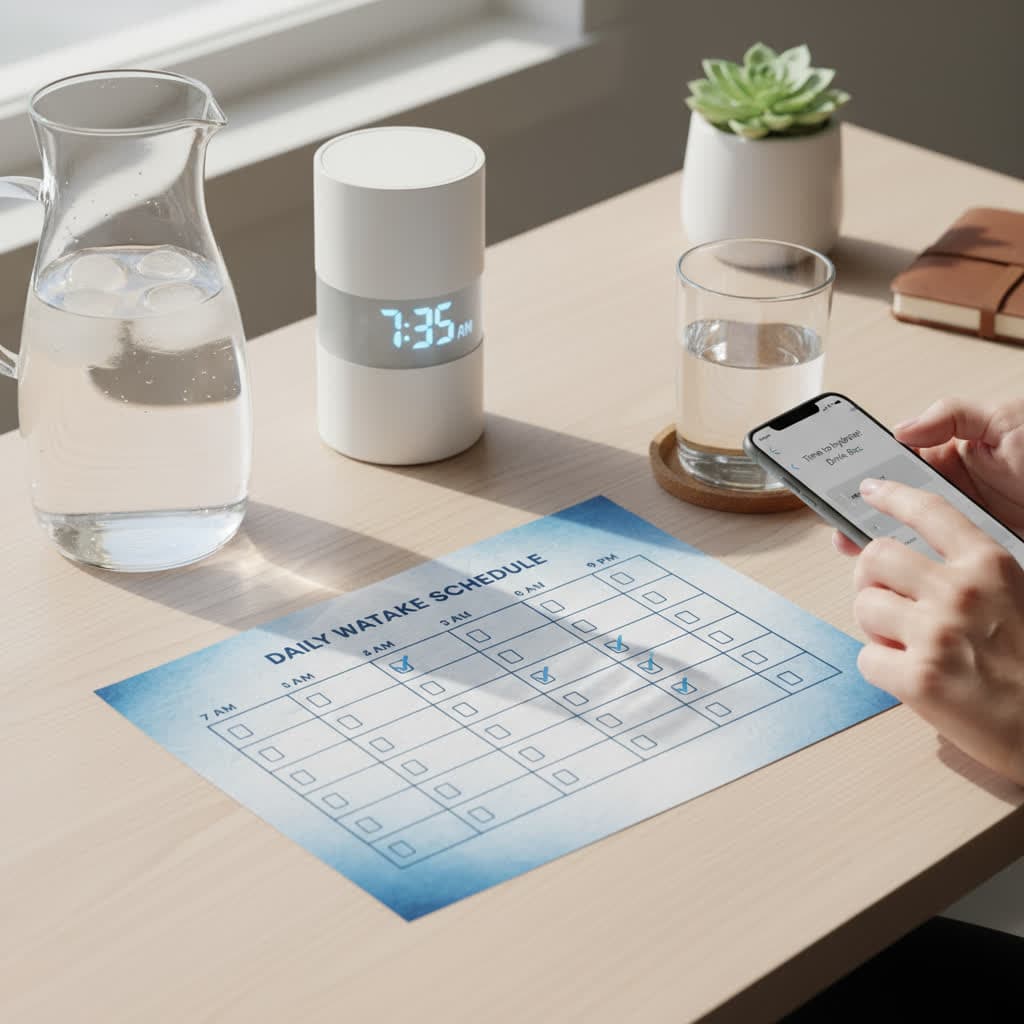
Here are some science-backed tips to keep yourself well hydrated:
Drink Plenty of Fluids Daily
This sounds obvious, but many of us simply don't drink enough. A common guideline is to aim for about 8 glasses of water a day (around 2 liters) for an average adult, though individual needs vary.
The National Academies of Science suggest roughly 11 cups (2.6 L) a day for women and 15 cups (3.5 L) for men from all sources (including food) as an adequate intake.
Key strategy: The key is to drink consistently throughout the day, not chugging it all at once. Keep a water bottle with you as a reminder.
If you find plain water boring, mix it up with:
- Sugar-free flavorings
- Add a slice of lemon
- Consume water-rich fruits (like watermelon or oranges)
- Vegetables (cucumbers, lettuce) which also contribute to hydration
- Herbal teas or electrolyte drinks
Don't Wait to Feel Thirsty
Relying on thirst alone is not enough, especially for certain groups. Thirst is a lagging indicator – by the time you feel parched, you're probably already a bit dehydrated.
This is even more true for older adults and young children; their sense of thirst can be blunted or they may not communicate it. So, make drinking a habit.
Practical tips:
- Drink a glass of water first thing in the morning
- Have water with each meal
- Sip regularly in between
- Set periodic reminders or use a smartphone app to prompt you
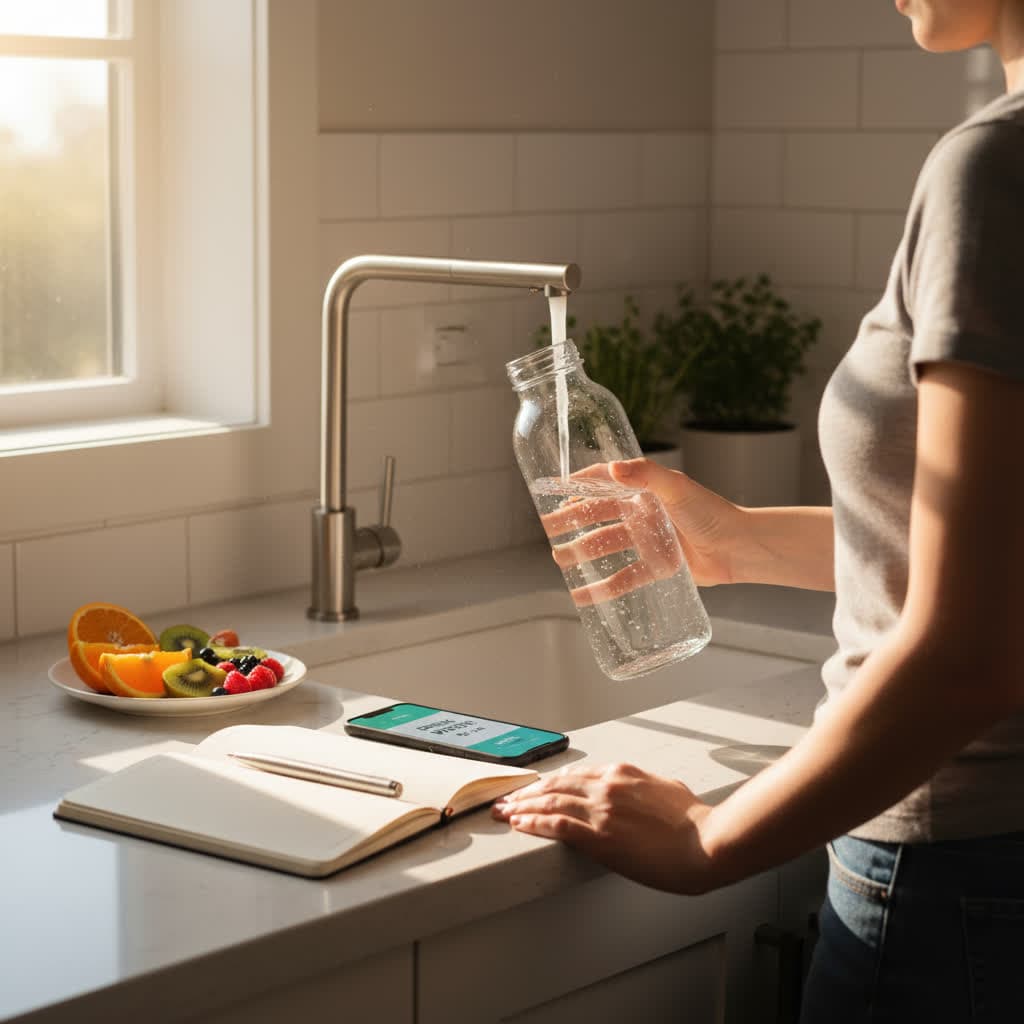
Adjust for Activity and Weather
Increase your fluid intake when circumstances demand it. Hot and humid day outside? You'll sweat more, so drink more. Intense workout or physically demanding job? Start hydrating before the activity, drink during (if possible), and continue after to replace losses.
Rule of thumb: Drink an extra 1–3 cups (240–710 mL) of water for short workouts, and even more if exercising for longer periods, especially in heat.
During high exertion (or if you're a heavy sweater), consider drinks that contain electrolytes (sports drinks or oral rehydration solutions in moderation) to replenish salts lost in sweat. Listen to your body's needs during these times – if you're sweating bullets, drink up accordingly.
Be Cautious with Diuretics (Caffeine & Alcohol)
Beverages like coffee, strong tea, and alcohol can have a diuretic effect, causing you to lose fluid. You don't necessarily need to avoid them entirely, but use moderation and offset them with water.
Smart strategies:
- If you drink a cup of coffee, have a glass of water alongside it
- When having alcoholic drinks, try to alternate each alcoholic beverage with a glass of water
- This will help keep you hydrated and may save you from that dreaded hangover dry mouth
Plan Ahead for Illness
If you're sick with a fever, vomiting, or diarrhea, your fluid needs shoot up dramatically. Do not wait for signs of dehydration in these cases. Proactively sip fluids even if you're not thirsty or don't feel like eating.
Helpful options:
- Small, frequent sips of water
- Diluted juice
- Clear broths
- Rehydration solutions (like Pedialyte or sports drinks)
- Ice chips or frozen electrolyte pops if your stomach is upset
If you notice you can't keep fluids down or symptoms of dehydration are appearing, seek medical advice early.
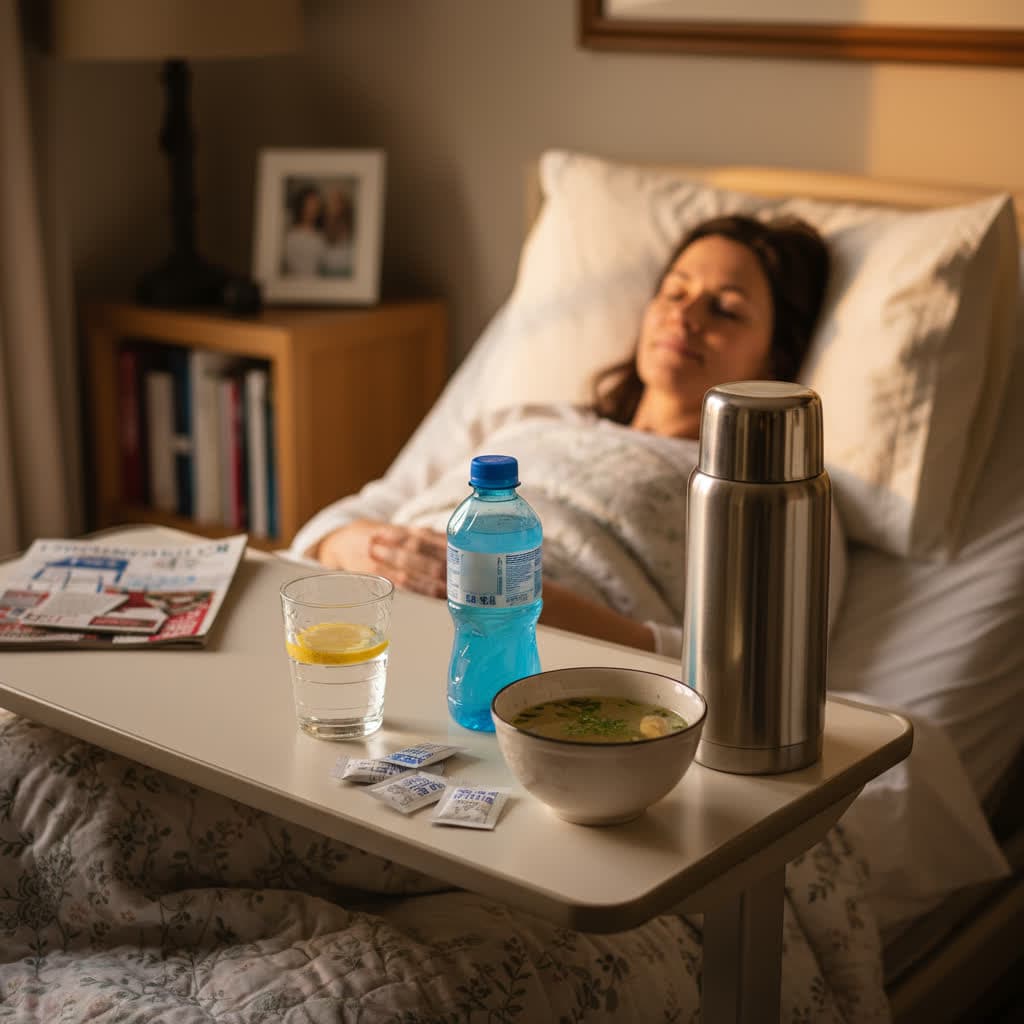
Use a Urine Check and Other Cues
Make it a daily routine to check that your urine is a healthy light color as we described above. It's a quick feedback loop on whether you need more water.
Other good cues:
- If you've gone several hours without peeing, that's a sign to drink
- If you're feeling unusually tired or getting a slight headache, consider whether you might be low on fluids
- Try drinking water to see if you perk up
By being attuned to these small signals, you can often prevent a mild case of dehydration from snowballing.
Hydrate During Travel and Heat Waves
Special situations require special attention:
- Flying on an airplane: The low humidity can dehydrate you faster – so drink water during your flight
- High altitudes or very hot climates: Plan to drink more than usual
- During heat waves: Make it a point to check on relatives or friends (especially the elderly) to ensure they are drinking enough, since they might not notice thirst as readily
Eat Hydrating Foods
Not all hydration has to come from liquids. As mentioned, fruits and veggies are great sources of water. In fact, foods like watermelon, strawberries, cucumbers, celery, and lettuce are over 90% water.
Hydrating food options:
- Soups
- Smoothies
- Oatmeal (made with water or milk)
Including these in your diet can help maintain hydration, especially if you struggle to drink plain water.
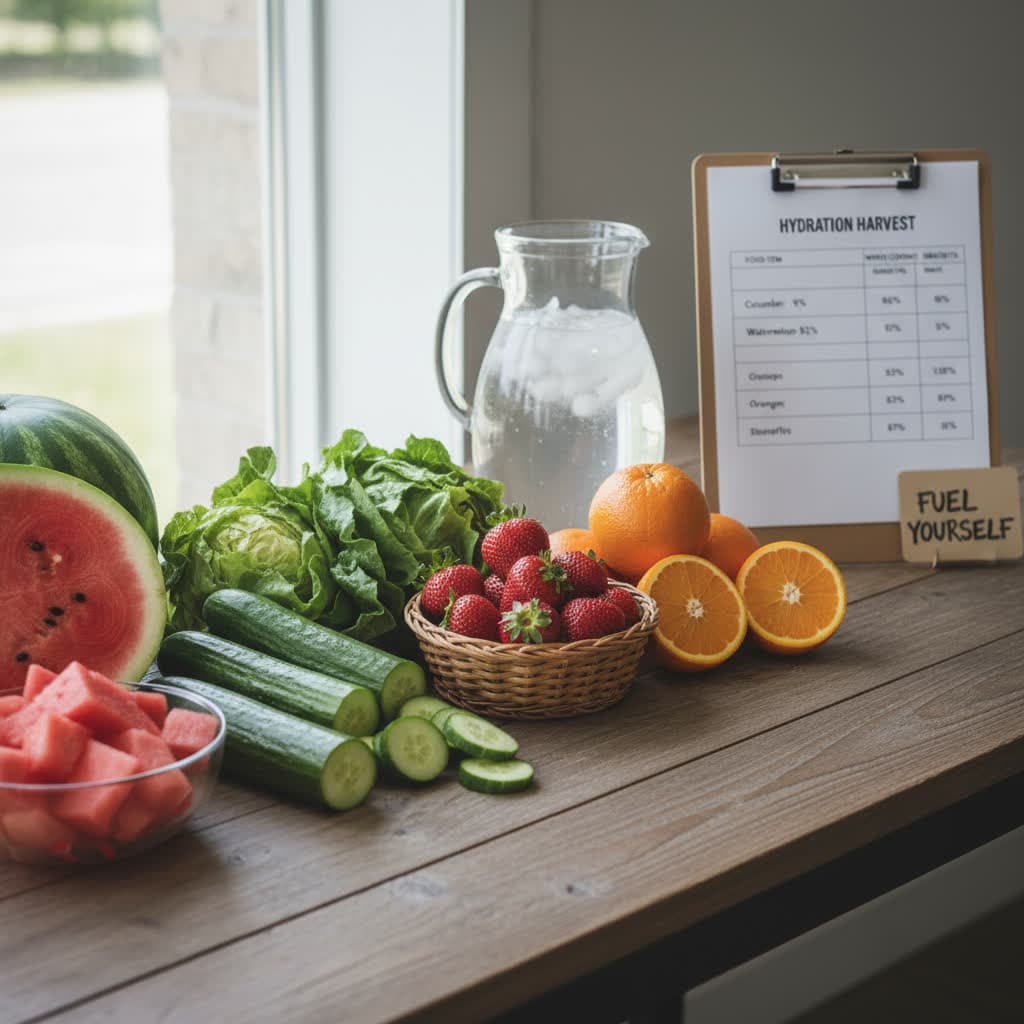
Building Healthy Hydration Habits
By incorporating these practices, you'll develop a kind of "hydration habit." Over time, it becomes second nature to sip water regularly, and you'll find you experience those dehydration symptoms far less frequently.
Remember that prevention is always better than cure – it's much easier to maintain hydration than to play catch-up once you're dehydrated. Your body will thank you: you'll likely notice better energy levels, fewer headaches, and even improvements in mood and concentration when you're well hydrated.
Finally, building a relationship of trust with your body's signals is key. If you learn to listen to early signs and respond by drinking fluids, you reinforce a healthy cycle. Your body, in turn, functions optimally and "rewards" you with feeling good.
It's a bit like tending to a plant – a little water at the right time keeps it perky and green, whereas neglect can lead to a wilted, unhappy plant. So keep yourself "watered!"
By recognizing dehydration symptoms early, using tools like the urine color chart, and following simple prevention tips, you can stay safely hydrated and support your health every day.
Find Your Local Hydration Needs
Get personalized hydration recommendations based on your local climate and weather conditions:
Sources and References
-
Mayo Clinic Staff. "Dehydration – Symptoms & causes." Mayo Clinic. Symptoms of dehydration in adults (extreme thirst, less urination, dark urine, tiredness, dizziness, confusion, etc.)
-
Mount Sinai. "Dehydration." Mount Sinai Health Library. Signs of mild vs. severe dehydration (thirst, dry mouth, dark urine, headache vs. no urination, very dark urine, confusion, rapid heartbeat, etc.); Prevention tips (drink plenty of fluids daily, don't wait for thirst, extra fluids in hot weather or illness)
-
Harvard Health Publishing. "Symptoms of dehydration: What they are and what to do if you experience them." Harvard Health Blog, Jan 2, 2024. Explanation of dehydration symptoms: headache, dizziness (low blood pressure), dark-colored urine (concentrated), fatigue; Severe dehydration signs in adults (lack of urination, rapid heartbeat/breathing, confusion, fainting)
-
NSW Health. "Urine colour chart – Beat the Heat Program." NSW Health, Australia. Hydration status indicated by urine color: pale yellow (well hydrated) vs. darker yellow (dehydrated) vs. dark amber (very dehydrated). Note that certain foods/medications can alter urine color even if hydrated
-
DripDrop Hydration. "Urine Color Chart: How to Know When You're Dehydrated." DripDrop Blog, Dec 16, 2020. General guidance on urine color and meaning: light color = ideal hydration, dark color = need fluids, brown = severe dehydration. Also discusses thirst response diminishing with age and importance of electrolytes in rehydration